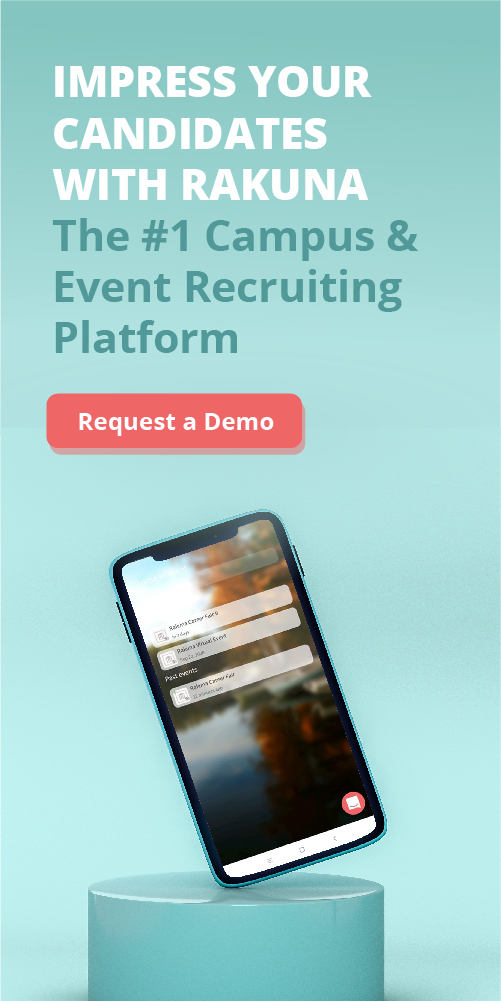Racism has always been a sensitive problem; today, it has become a more delicate topic than ever in recruitment.
As the human rights activist Archbishop Desmond Tutu once said:
“If you are neutral in situations of injustice, you have chosen the side of the oppressor.”
Therefore, taking action toward removing unconscious bias on race to embrace diversity in recruitment is regarded as the upward trend of all businesses in the world.
But what are unconscious biases on race, why is it essential to remove them in your hiring process, and how do you achieve that ideal process? Check out all these best practices to review and improve your current recruiting process!
Unconscious Bias on Race in Recruitment – What Are They?
Unconscious bias is also known as implicit bias. Unconscious bias refers to a bias that is unaware of and triggered by our brain making quick judgments and assessments of people and situations depending on their race. It strongly influences our decision to hire a candidate or not.
Read more: Eye-opening Best Practice Strategies for Diversity Recruiting.
Why is It Essential to Eliminate Racial Unconscious Bias in The Hiring Process?
It is proved that removing racial unconscious bias in the campus recruitment process can help the business reach out to the best talents, improve the employees’ performance, and increase business profits.
According to a McKinsey report
Companies in the top quartile for racial and ethnic diversity are 35 percent more likely to have financial returns above their respective national industry medians”.
Moreover, many studies have indicated that teams consisting of both white and black members often focus more on facts, carefully analyze information, and come up with great innovations when the organizational culture and leadership support learning across differences.
In terms of legal aspects, many countries enact laws to stop discrimination in the workplace.
- In the U.S., Title VII of the Civil Rights Act of 1964 prohibits discrimination at work based on race, color, religion, sex, and national origin.
- Similarly, in the U.K., the Equality Act 2010 is also introduced to protect employees from discrimination.
- The Australian government also brings in the Australian Human Rights Commission Act 1986 (Cth) to protect diversity in employment.
- In Canada, there are laws that protect human rights and prevent discrimination among communities, such as the Canadian Human Rights Act of 1977 and the Employment Equity Act of 1986.

Types of Unconscious Racism in The Current Hiring Process
Despite all the benefits of a diverse workplace, minorities still struggle to find suitable positions in a wide range of industries and sectors. Positions in a wide range of industries and sectors.
For example, according to the U.S. Bureau of Labor Statistics, at U.S. finance companies in 2019, only 2.4% of executive committee members, 1.4% of managers and directors, and 1.4% of senior portfolio managers were black. Similarly, in a 2020 report by University College London, 46% of all schools in the UK do not have Black, Asian, and minority ethnic.
Racism Throughout the Campus Recruitment Process
So, how can unconscious bias occur throughout your campus recruitment process?
Racial Prejudices in Resume Screening
Many candidate resumes are put in the trash bin just because they have ethnic names or come from black universities or African countries.
In a recent Bloomberg article, it was discovered that names with distinctive minority traits are still 2.1% less likely to be contacted by employers relative to “White-sounding” names. It may result from the unconscious or, in some cases, a conscious bias of recruiters/screeners themselves that makes it hard for them to stop.
Racism in In-person Interviews
According to new research by Havard and other institutes, there are groups of candidates who share similar qualifications who come to interview for the jobs, they all share similar qualifications, and the only difference is the color of their skin. It concludes that white candidates gain 36% more callback than black ones. Therefore, employers must remove the unconscious bias to employ candidates based on their potential, knowledge, and skills, not their skin, nationalities, or ethnicity.
Racism in the Job Description (JD)
While gender-bias is the most common bias that happens with job descriptions, there are some racial bias words that you should look out for in your job descriptions. For instance, the phrase “Master/Slave”, indicating software architecture, is used in many database-related job ads. In 2004, it was ranked by Global Language Monitor as “the most politically incorrect term”. As a result, giant tech companies such as IBM, Microsoft, and Amazon Web Services have changed the words “master/slave” into “primary/replica.”
Types of Unconscious Racism
Unconscious biases often lurk subtly within our workplaces, manifesting in various forms. Let’s delve into the most common types that may impact our recruiting processes:
Affinity Bias
This happens when we’re naturally drawn to people who are like us in some way. It could be because of similar backgrounds, experiences, or interests.
For example, if a hiring manager prefers candidates who went to the same school they did, they might unintentionally ignore other qualified candidates who bring different perspectives.
Confirmation Bias
This is when we look for information that agrees with what we already believe and ignore anything that doesn’t. In recruiting, this can make it hard to see past our initial opinions and make fair decisions.
For instance, if a hiring team already has an idea of what they want in a candidate, they might only focus on things that fit that idea and ignore anything else that could be important.
Attribution Bias
This is when we judge ourselves more positively than we judge others.
To illustrate, if we succeed at something, we might think it’s because we’re smart or talented. But if someone else succeeds, we might say it’s just luck or because of something else. This can lead to unfair judgments in hiring, where one candidate might be praised for their achievements while others aren’t given the same credit.
Halo Effect
This happens when we let our overall impression of someone influence how we see everything else about them.
For example, if a candidate impresses us with their confidence or looks, we might overlook any weaknesses they have. This can lead to biased decisions where candidates are chosen based on things that aren’t really relevant to the job.
Perception Bias
This is when we make assumptions about people based on stereotypes or what we think we know about them.
For instance, if we have certain ideas about what kind of person is best suited for a job, we might overlook candidates who don’t fit those ideas, even if they’re actually qualified.
Tips for Businesses to Remove Unconscious Bias in Recruitment and Embrace Diversity
1. Train Your Team to Recognize Unconscious Bias
Start by helping recruiters and hiring managers understand that they may unknowingly hold biases. Offer internal training sessions that explain what unconscious bias is and provide strategies for recognizing and minimizing its impact on the hiring process.
Example:
Starbucks took proactive steps in 2018 by closing all its stores across the U.S. and Canada for sessions focused on racial bias training. These sessions, conducted by implicit bias experts and civil rights activists, aimed to educate employees on recognizing and addressing unconscious biases. This proactive approach demonstrated Starbucks’ commitment to fostering inclusivity and diversity within its workforce.
Actionable Tips:
- Provide regular training sessions on unconscious bias awareness and mitigation techniques.
- Encourage open discussions among team members about their experiences and perspectives to increase awareness.
- Implement blind resume screening processes to minimize bias based on applicant demographics.
- Establish diverse interview panels to ensure multiple perspectives are considered during candidate evaluations.
- Incorporate diversity and inclusion metrics into performance evaluations to reinforce the importance of combating bias.
- Solicit feedback from candidates about their recruitment experience to identify and address any potential biases in the process.
2. Review Your Job Descriptions
Studies show that bias can emerge right from the moment a potential candidate reads a job description. Certain words and phrases may unintentionally discourage certain groups from applying. For instance, terms like “strong English skills” might deter non-native English speakers. It’s crucial to use neutral language in job descriptions to attract a more diverse pool of candidates. Explore these effective tech tools to help review your job descriptions:
Textio – This augmented writing platform evaluates your existing job descriptions, assigns a score, and provides suggestions to enhance it. A higher score increases the likelihood of attracting a diverse range of applicants.
Gender Decoder – A free tool that helps companies analyze their job descriptions for gender-coded language. For example, words like ‘driven’ may be perceived as masculine, while ‘dependable’ as feminine. This tool assists in reducing or eliminating gender bias from job descriptions.
Actionable Tips:
- Use tools like Textio and Gender Decoder to assess and improve your job descriptions.
- Consult with a diverse group within your team & candidates to get feedback on job descriptions.
- Highlight the company’s commitment to diversity and inclusion in job postings.
- Regularly revisit and update job descriptions to align with evolving standards and inclusive practices.
3. Diversify Your JD Advertisement Channels
The best way to attract more potential candidates and increase your team diversity is to diversify your JD advertisement channels. Besides everyday job posting sites such as Indeed and Career Builder, social channels such as Linkedin are also a great source of advertising to valuable candidates regardless of race, education, and background. Below are a few examples of diversity-specialized websites for job hunting that you can try out:
Actionable Tips:
- Utilize a mix of both traditional and social media channels to maximize your job advertisement reach.
- Actively engage with diverse communities and organizations to promote job opportunities.
- Leverage employee referral programs to tap into diverse networks and attract qualified candidates.
Read more: Increase the Diversity in Your Campus Recruiting Program

4. Use Structured, Consistent Evaluation Forms in the Hiring Process
Employing structured evaluation forms is vital for reducing unconscious bias in hiring. This means following set procedures focusing on a candidate’s skills and job-related qualities rather than personal traits. Here’s how it helps:
- Skill Tests: These tests make candidates show their abilities and work quality rather than personal traits. For example, in a coding test for a software job, candidates are judged only on their coding skills, not on things like gender or age.
- Standardized Interviews: These involve asking every candidate the same questions. This makes it fairer and consistent. For instance, all candidates for a customer service job could be asked how they handle tough customers. This way, their responses are compared more objectively.
Using tools like Rakuna makes using standardized evaluation forms in interviews easy. They help recruiters and hiring managers assess candidates fairly and follow the law and company policies.
5. Use “Blind Hiring Techniques”
Blind hiring involves removing or anonymizing personal information to prevent unconscious bias during the candidate evaluation process. This approach encourages a more open-minded assessment of a candidate’s skills, knowledge, and potential for success. The key components of blind hiring include:
- Blind Candidate Screening: This entails screening candidates without considering personal details such as names, hometowns, schools, or addresses. By removing these identifiers, recruiters focus solely on the candidate’s qualifications and experiences.
For instance, during the initial screening phase, recruiters could review resumes without information revealing the candidate’s name, preventing biases based on gender, ethnicity, or location.
- Blind Pre-Hire Testing: Before hiring, candidates undergo pre-hire tests that evaluate their job-related skills and knowledge. These tests can be conducted online and may include personality assessments.
An example is utilizing online assessments to evaluate a candidate’s coding skills without knowing details like their educational background, ensuring a fair evaluation based solely on merit.
- Blind Interviewing: Interviews are conducted in a way that anonymizes the candidate. This could involve using anonymized written Q&A or conducting interviews through chat or phone calls without revealing personal information.
For instance, conducting initial interview rounds via chat where the focus is solely on responses to job-related questions without the interviewer knowing the candidate’s identity
6. Have A Good Record-Keeping System in Place for Your Entire Prospecting and Application Process
For many U.S. companies, having an applicant tracking system (ATS) as a record-keeping system for the entire application process is almost mandatory to ensure compliance with the Equal Employment Opportunity Commission (EEOC) rules, which require companies to demonstrate non-discriminatory practices. The ATS can track all your job requisitions, job descriptions, advertisement channels, search results from the ATS database, notes, and decisions all along the way, from the moment a candidate applies to your company until the final decision is made. It is a helpful tool for compliance and your team to review your process and results and make adjustments if needed.
Beyond ATS, there are candidate relationship management (CRM) tools that track prospective candidates before they become your applicants. They are also helpful in recording the treatment of all prospective candidates to ensure your company is not violating any discrimination rules. Here are selected CRM and ATS tools for your consideration:
- Zoho Recruit is a product of Zoho with a wide range of features, including candidate sourcing, candidate management, and massive space for hiring solution customization, which will suit the needs of diverse clients.
- Rakuna CRM is a great product that helps recruiters strengthen engagement with candidates from different backgrounds. This tool has a specific Diversity Recruiting Solution Module, which makes it stand out from other standard CRM solutions. Not only can it handle the usual CRM functions, but it can help you dig deeper into diversity results, statistics, and surface diversity organizations and events that your team should follow or look at to help diversify your prospect pool.
- Workable is a cloud-based recruitment app for businesses that has partnered with LinkedIn, Indeed, etc., to support the hiring activities of many companies. Its key features are social media recruitment, job posting, and advertising
7. Using Data for Informed Hiring Decisions
Employing data-driven decision-making involves regularly analyzing hiring data to uncover patterns of bias in the campus recruitment process. By leveraging this information, organizations can refine their hiring strategies and track progress toward diversity and inclusion objectives. Here’s how to implement this approach effectively:
- Regular Data Analysis: Routinely review hiring data to identify any trends or patterns that may indicate bias in the recruitment process. This includes analyzing metrics such as candidate demographics, application-to-hire ratios, and interview outcomes.
For example, monitoring data may reveal disparities in the selection rates of candidates from different demographic groups, highlighting potential areas of bias.
- Refining Hiring Strategies: Use insights from data analysis to refine hiring strategies and practices. This may involve adjusting recruitment methods, revising job descriptions to promote inclusivity, or implementing blind hiring techniques.
For instance, if data analysis indicates that candidates from underrepresented groups are less likely to advance beyond the initial screening stage, strategies such as blind resume screening may be implemented to mitigate bias.
- Monitoring Diversity Goals: Track progress toward diversity and inclusion goals by measuring key hiring metrics over time. Regularly assess the effectiveness of diversity initiatives and adjust strategies as needed to ensure alignment with organizational objectives.
For example, specific targets for increasing the representation of marginalized groups within the workforce can be set, and hiring data can be used to monitor progress toward these goals.
8. Implementing Mentorship and Sponsorship Programs
Establishing mentorship and sponsorship programs is a proactive step toward supporting underrepresented employees’ career growth and development. These programs not only benefit individual employees but also contribute to creating a pipeline of diverse talent for future hiring needs. Here’s how to effectively implement mentorship and sponsorship initiatives:
- Mentorship Programs: Pair employees from underrepresented groups with experienced mentors who can provide guidance, support, and career advice. Mentors can help mentees navigate challenges, set career goals, and develop essential skills.
For example, a senior female executive may mentor a junior female employee, offering insights into career advancement opportunities and strategies for overcoming barriers.
- Sponsorship Programs: Sponsorship goes beyond mentorship by actively advocating for the career advancement and visibility of underrepresented employees within the organization. Sponsors use their influence and networks to create opportunities for their protégés, such as recommending them for high-profile projects or promotions.
For instance, a senior leader may sponsor a talented employee from an underrepresented group by publicly endorsing their work and advocating for their inclusion in leadership development programs.
- Pipeline Development: Mentorship and sponsorship programs contribute to building a robust pipeline of diverse talent for future hiring needs. By investing in the professional growth of underrepresented employees, organizations cultivate a pool of skilled individuals who are well-equipped to take on leadership roles and contribute to the company’s success.
For example, a mentorship program that supports women in technology may help cultivate a pipeline of female talent for technical roles within the organization.
Wrapping Up
In this fast-changing business scenario, the competitiveness of hunting for talent has become more heated than ever. Therefore, removing unconscious bias in your hiring process is a must that every company should be doing. Luckily, with modern technology, there are many useful apps and software that facilitate you to eliminate hidden biases, optimize your hiring process, and sort out the best potential and suitable talents for your business. Take advantage of them and improve your recruitment now!

